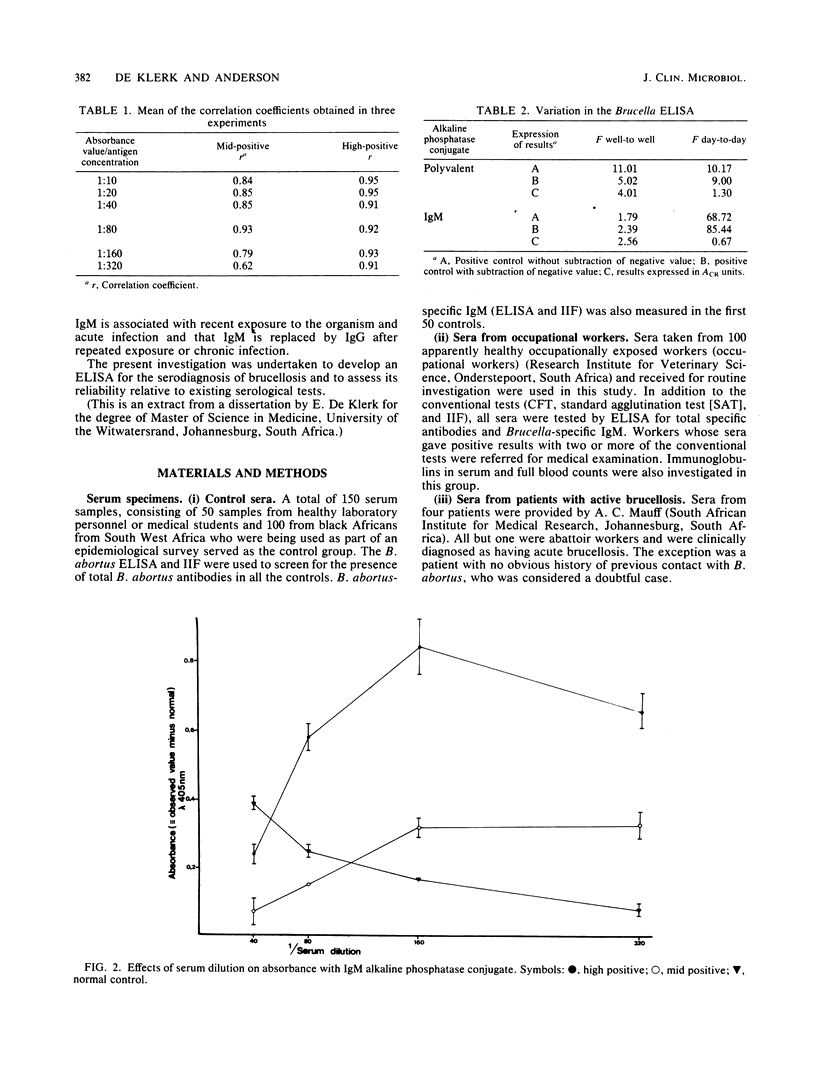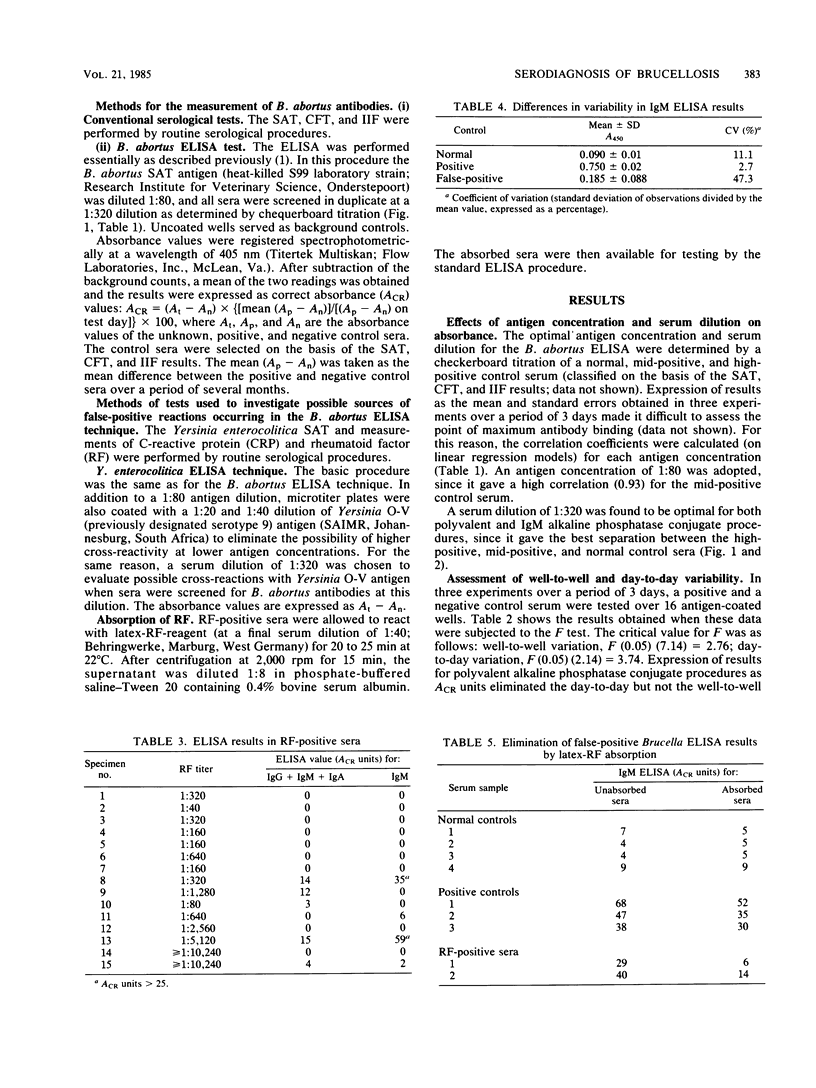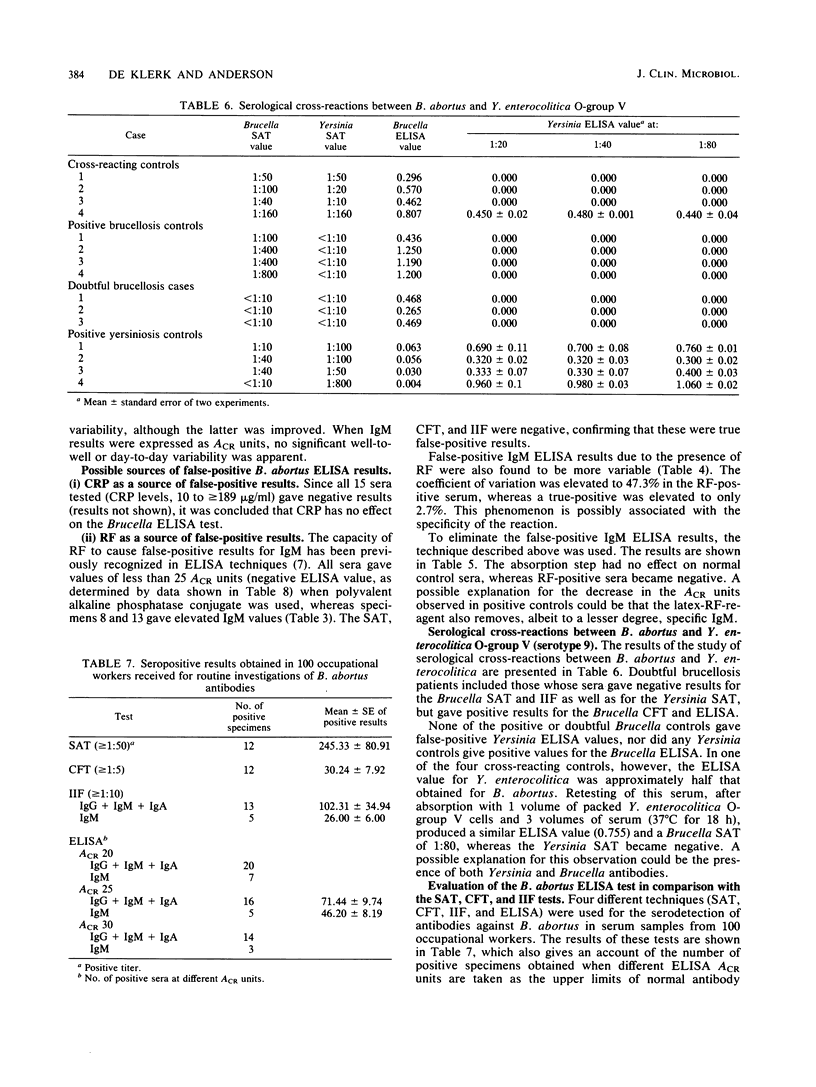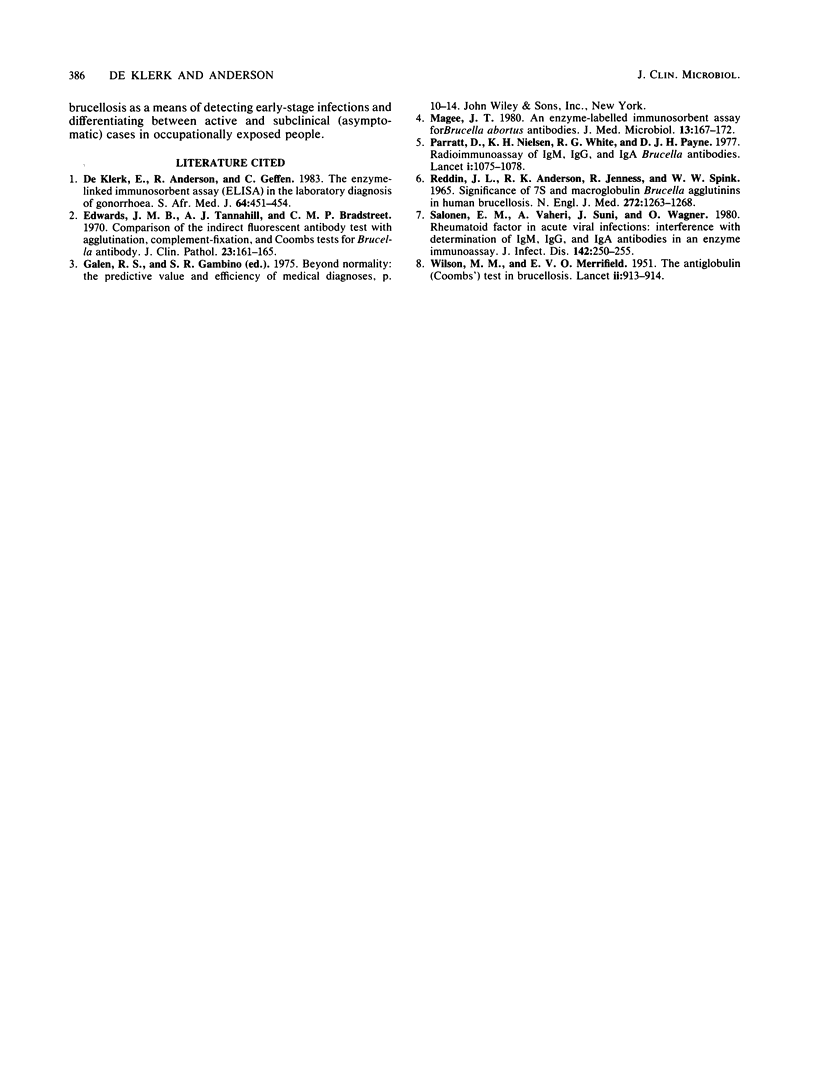Abstract
An enzyme-linked immunosorbent assay was adapted to measure total and Brucella abortus-specific immunoglobulin M antibodies. The results were compared with those of conventional serological tests for B. abortus antibody on the sera of a number of normal controls, apparently healthy occupationally exposed workers, and patients with suspected acute brucellosis. Relative to other tests, the B. abortus enzyme-linked immunosorbent assay was found to be both highly sensitive and highly specific. The serological results obtained in occupationally exposed workers indicate a higher "normal range" for this group and therefore a possibility of false-positive results and overdiagnosis. It is therefore important to establish a separate "normal range" for occupationally exposed workers. Investigation of patients with acute brucellosis showed that the enzyme-linked immunosorbent assay for immunoglobulin M was the most sensitive serodiagnostic test and was likely to be of value in the serodiagnosis of acute brucellosis in occupationally exposed workers.
Full text
PDF





Selected References
These references are in PubMed. This may not be the complete list of references from this article.
- De Klerk E., Anderson R., Geffen C. The enzyme-linked immunosorbent assay (ELISA) in the laboratory diagnosis of gonorrhoea. A comparative evaluation. S Afr Med J. 1983 Sep 17;64(12):451–454. [PubMed] [Google Scholar]
- Edwards J. M., Tannahill A. J., Bradstreet C. M. Comparison of the indirect fluorescent antibody test with agglutination, complement-fixation, and Coombs test for Brucella antibody. J Clin Pathol. 1970 Mar;23(2):161–165. doi: 10.1136/jcp.23.2.161. [DOI] [PMC free article] [PubMed] [Google Scholar]
- Magee J. T. An enzyme-labelled immunosorbent assay for Brucella abortus antibodies. J Med Microbiol. 1980 Feb;13(1):167–172. doi: 10.1099/00222615-13-1-167. [DOI] [PubMed] [Google Scholar]
- Parratt D., Nielsen K. H., White R. G. Radioimmunoassay of IgM, IgG, and IgA Brucella antibodies. Lancet. 1977 May 21;1(8021):1075–1078. doi: 10.1016/s0140-6736(77)92334-0. [DOI] [PubMed] [Google Scholar]
- REDDIN J. L., ANDERSON R. K., JENNESS R., SPINK W. W. SIGNIFICANCE OF 7S AND MACROGLOBULIN BRUCELLA AGGLUTININS IN HUMAN BRUCELLOSIS. N Engl J Med. 1965 Jun 17;272:1263–1268. doi: 10.1056/NEJM196506172722403. [DOI] [PubMed] [Google Scholar]
- Salonen E. M., Vaheri A., Suni J., Wager O. Rheumatoid factor in acute viral infections: interference with determination of IgM, IgG, and IgA antibodies in an enzyme immunoassay. J Infect Dis. 1980 Aug;142(2):250–255. doi: 10.1093/infdis/142.2.250. [DOI] [PubMed] [Google Scholar]
- WILSON M. M., MERRIFIED E. V. O. The antiglobulin (Coombs) test in brucellosis. Lancet. 1951 Nov 17;2(6690):913–914. doi: 10.1016/s0140-6736(51)91875-2. [DOI] [PubMed] [Google Scholar]


